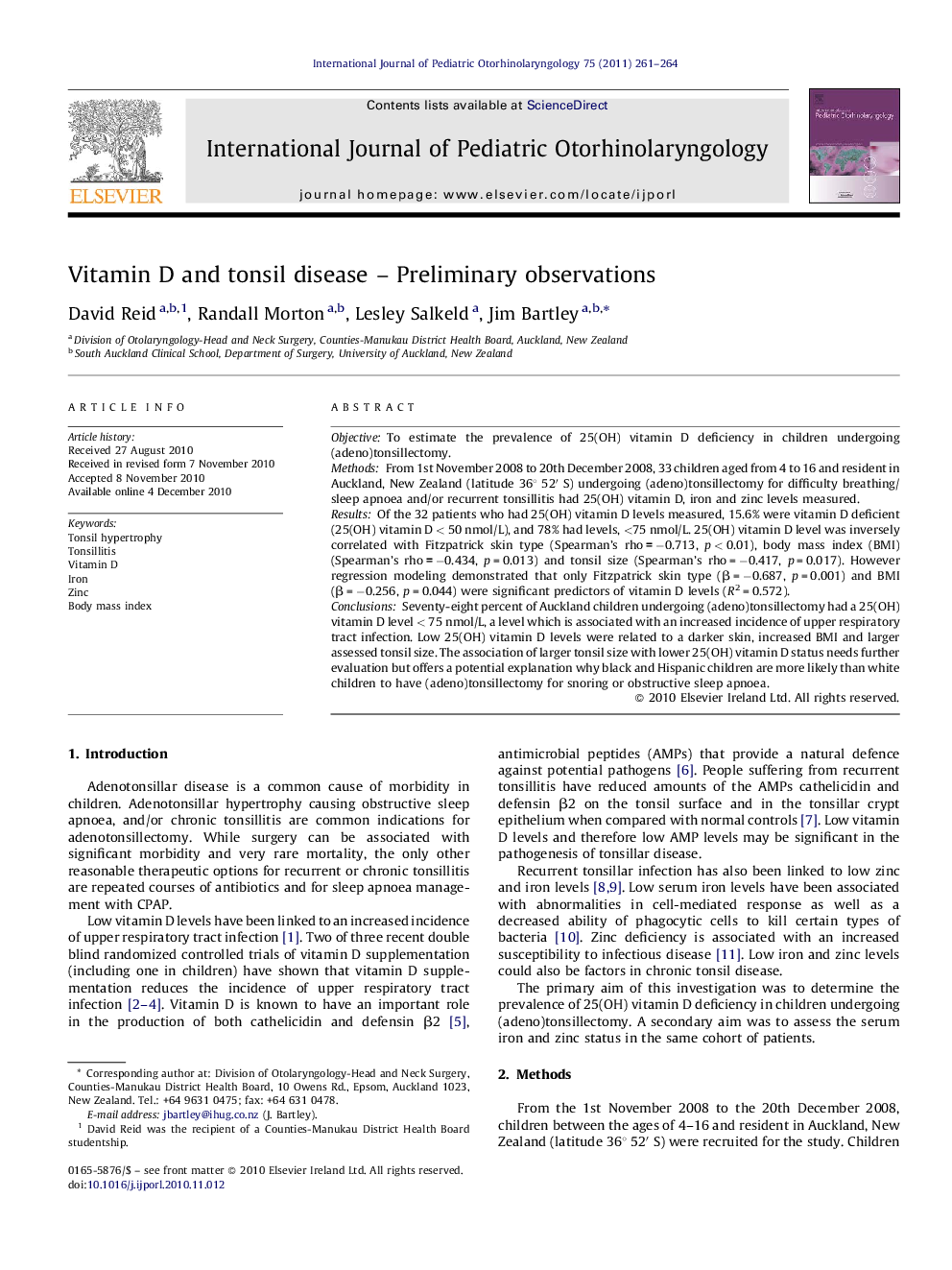| Article ID | Journal | Published Year | Pages | File Type |
|---|---|---|---|---|
| 4114101 | International Journal of Pediatric Otorhinolaryngology | 2011 | 4 Pages |
ObjectiveTo estimate the prevalence of 25(OH) vitamin D deficiency in children undergoing (adeno)tonsillectomy.MethodsFrom 1st November 2008 to 20th December 2008, 33 children aged from 4 to 16 and resident in Auckland, New Zealand (latitude 36° 52′ S) undergoing (adeno)tonsillectomy for difficulty breathing/sleep apnoea and/or recurrent tonsillitis had 25(OH) vitamin D, iron and zinc levels measured.ResultsOf the 32 patients who had 25(OH) vitamin D levels measured, 15.6% were vitamin D deficient (25(OH) vitamin D < 50 nmol/L), and 78% had levels, <75 nmol/L. 25(OH) vitamin D level was inversely correlated with Fitzpatrick skin type (Spearman's rho = −0.713, p < 0.01), body mass index (BMI) (Spearman's rho = −0.434, p = 0.013) and tonsil size (Spearman's rho = −0.417, p = 0.017). However regression modeling demonstrated that only Fitzpatrick skin type (β = −0.687, p = 0.001) and BMI (β = −0.256, p = 0.044) were significant predictors of vitamin D levels (R2 = 0.572).ConclusionsSeventy-eight percent of Auckland children undergoing (adeno)tonsillectomy had a 25(OH) vitamin D level < 75 nmol/L, a level which is associated with an increased incidence of upper respiratory tract infection. Low 25(OH) vitamin D levels were related to a darker skin, increased BMI and larger assessed tonsil size. The association of larger tonsil size with lower 25(OH) vitamin D status needs further evaluation but offers a potential explanation why black and Hispanic children are more likely than white children to have (adeno)tonsillectomy for snoring or obstructive sleep apnoea.
